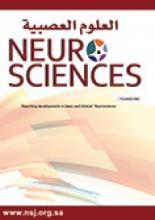Article Figures & Data
Tables
- Table 1
Major congenital malformation rates (mentioned between parenthesis) with common AED monotherapies during pregnancy, compared with unexposed pregnancies, from different registries around the world.
Registry / Study Healthyσ WWEσ CBZ LTG LVT VPA TPM n (MCM rate in percentage) Pregnancy registry of South India / Thomas et al 201719 319 (3.45) 252 (5.56) 389 (5.40) 38 (2.63) 30 (3.33) 268 (8.96)¥ - North American AED pregnancy registry /Hernandez et al 201220 442 (1.1) - 1033 (3.0) 1562 (2.0) 450 (2.4) 323 (9.3)¥ 359 (4.2)¥ Australian pregnancy registry / Vajda et al 201421 - 153 (3.3)* 346 (5.5) 307 (4.6) 82 (2.4) 253 (13.8)¥ 42 (2.4) Medical birth registry of Norway / Veiby et al 201422, € 771,412 (2.9) 3773 (2.8) 685 (2.9) 833 (3.4) 118 (1.7) 333(6.3)¥ 48 (4.2) UK epilepsy and pregnancy register / Campbell et al 201423, β - - 1718 (2.6) 2198 (2.3) - 1290 (6.7) - EURAP epilepsy and pregnancy registry / Tomson et al 201124, β - - 148 (1.3) 836 (1.7) - 431 (4.2) - WWE - Women with Epilepsy, CBZ - Carbamazepine, LTG - Lamotrigine, LVT - Levetiracetam, VPA - Valproic Acid, TPM - Topiramate,
↵σ Pregnant women who were not exposed to AED (during the first trimester in case of WWE), n - total number of pregnancies and / or fetuses, either exposed or not exposed (healthy and WWE columns) to AED, from which the MCM rate was determined.
↵¥ Significant values, where RR or OR was calculated between exposed and unexposed groups,
↵* women who were not healthy, because of epilepsy or other diseases that required AED use, but did not use them during the first trimester,
↵€ odds ratio was calculated instead of RR,
↵β no unexposed reference group for comparison, the study compares effect of dose among individual AEDs, and the MCM rate shown in the table is with the lowest dose
- Table 2
Approach towards women with epilepsy in child bearing age and pregnancy (summary of suggestions by the authors).
Confirm the diagnosis of epilepsy Confirm the diagnosis of epilepsy by seizure type and etiology of epilepsy History and examination are of pivotal importance A video taken by family members, by a smart phone or other gadgets, of the ictal events can be crucial and confirmatory in many cases. Interictal Electroencephalogram can be helpful in classification of the epilepsy type (but should always be interpreted in the clinical context). Video EEG capturing the ictal events may be considered a gold standard to diagnose and classify epilepsy, however, this may not be practically feasible in majority of cases, and patients having indications for this modality should be referred to centers that have the facility of epilepsy monitoring unit. Brain imaging, if indicated, is preferably done with a 3 tesla MRI machine. Counseling Should be done after confirmation of epilepsy by its etiology. It should be done along with other family members e.g., spouse, parents, siblings etc. Prognosis of epilepsy and possible duration of therapy should be carefully suggested. In case the patient is married or has plans to get married in near future, a planned pregnancy should be advised, and appropriate contraceptive methods should be suggested. Patient and spouse should be informed about the risks of teratogenicity and fetal growth restrictions associated with AED use. Patients should be given time to discuss their own fears and concerns about their diagnosis and its impact on their personal, social and professional life. Optimal therapy Optimal therapy is determined by the epilepsy etiology, and various other patient related factors. Valproic acid, phenytoin, phenobarbitone and Topiramate are least favorable Carbamazepine should not be used in idiopathic generalized epilepsy syndromes. Carbamazepine, Levetiracetam and lamotrigine may be preferred as they have lower risk of teratogenicity. Aim to use a single antiepileptic drug in the least possible dose. Serum drug levels whenever available should be monitored, and at least one trough level when the patient is completely seizure free should be obtained. Folic acid supplementation should be given. Patient should be seizure free for at least 9 months before conceiving During pregnancy Patient should be monitored by a combined team of gynecologist and neurologist / epileptologist. Drug levels may be monitored, on a monthly basis (particularly in case of lamotrigine). The pre-pregnancy drug level with total seizure control should be aimed for, during pregnancy. Folic acid supplementation should be continued at 4 to 5 mg /day A level II ultrasound at 18 to 20 weeks gestational age should be offered to the patient for a detailed anatomical evaluation of the fetus. WWE taking enzyme inducing AEDs and whose newborns are at risk of intracranial hemorrhage may be given Vitamin K supplementation in the last month of pregnancy. Normal vaginal delivery can be safely attempted with epidural anesthesia, if required, C-section may be considered in patients who are not able to cooperate during delivery process because of heavy sedation. Post- partum WWE should be advised to breast feed their newborns, (because of the usual benefits of breast feeding). Infants should be nursed and carried with some precautions (see text) If AED dose was stepped up during pregnancy then it should be stepped down gradually postpartum to avoid toxicity, while monitoring AED levels It is preferable to keep patient on a slightly higher dose that was before pregnancy (with full seizure control), but less than the pregnancy dose, for 1 to 3 months post-partum, to protect patients from effects of sleep deprivation.






